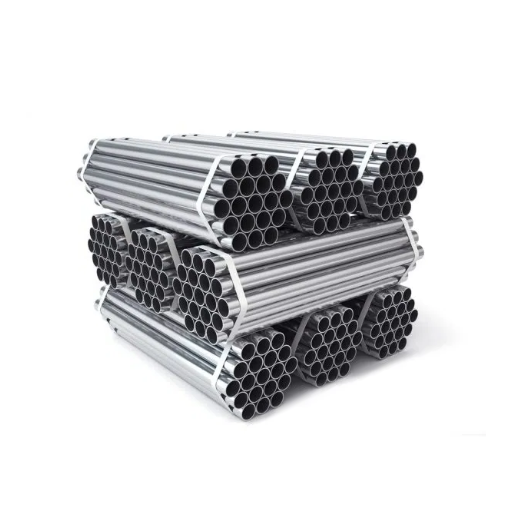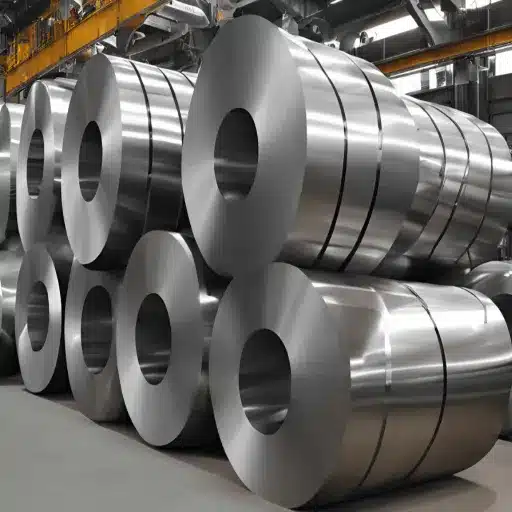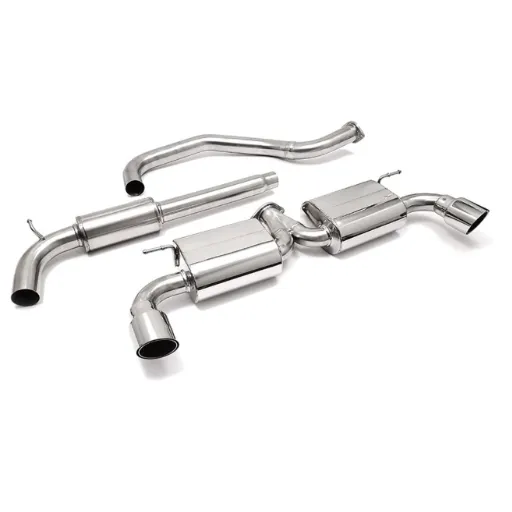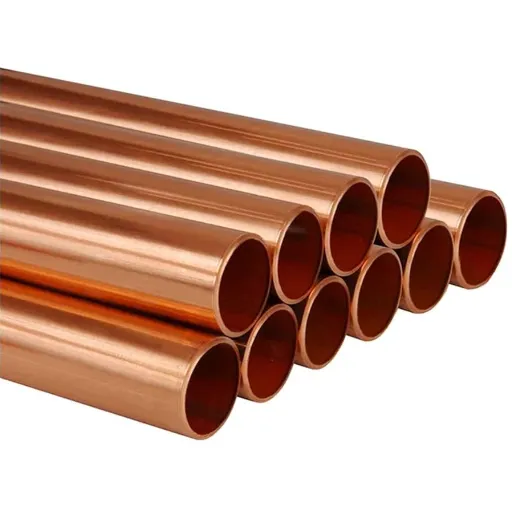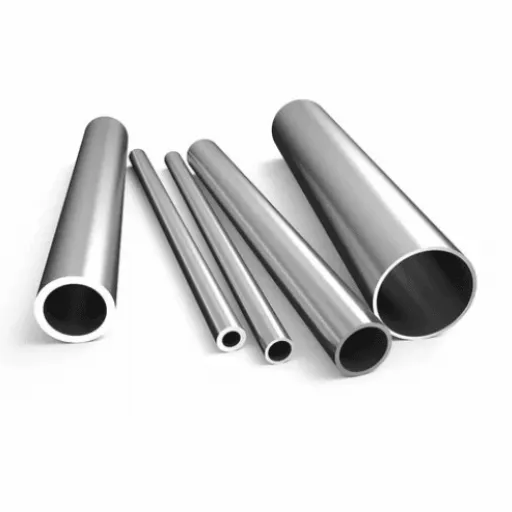When it comes to industrial applications requiring durability, corrosion resistance, and high performance, choosing the right stainless steel pipe can be a critical decision. Among the many options available, S22053 and S2520 stand out as two prominent grades, each with distinct properties and advantages. But how do they differ, and which one is better suited for your specific needs? This article provides a comprehensive comparison of S22053 and S2520 stainless steel pipes, breaking down their mechanical properties, chemical compositions, and practical applications. Whether you’re in construction, manufacturing, or engineering, understanding the nuances between these materials will empower you to make informed, strategic decisions for your projects.
What Are the Properties of Stainless Steel S22053?
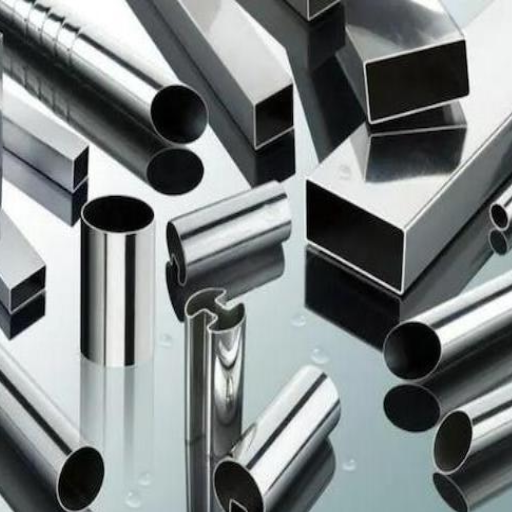
Understanding the Composition of Stainless Steel S22053
Duplex stainless steel S22053 has its special features because it is made with a perfect blend of austenite and ferrite phases that provide incredible mechanical strength while having corrosion resistance. Its chemical structure normally contains around 22% chromium, 5% nickel, and 3% molybdenum while maintaining a certain level of nitrogen. These elements act together to improve its resistance to localized corrosion, especially to pitting and crevice corrosion.
Because S22053 contains large amounts of chromium and molybdenum, it is very well suited for harsh environmental conditions, or places with strong oxidizing and reducing environments, because it contains very good resistance to those conditions. Also, the correct balance of Nickel aids in the stabilization of the austenitic phase while increasing ductility and weldability. S22053 also possesses other good features like controlled nitrogen that maximizes structural integrity as it allows the steel to withstand greater amounts of stress whilst reducing the chances of fractures occurring under a load.
Equally important is that the Carbon content in S22053 is low, which assists in reducing of chances for carbide precipitation occurring during welding and fabrication works. These elements, along with the high temperatures being exposed to, permit S22053 to retain its anti-corrosive properties. These features give S22053 versatility and reliability for usage, especially in industrial applications and mechanical engineering, where strength and life expectancy are very fundamental, including chemical processing in marine environments.
How Does S22053 Perform in Different Environments?
Due to its advanced metallurgical composition, S22053 shows exceptional performance in diverse settings and sustains corrosion as well as mechanical wear. S22053 displays remarkable resistance to pitting, crevice corrosion, and stress corrosion cracking in extremely aggressive environments like those in the chemical processing industry. This adaptation makes it very appropriate for use in situations that involve exposure to highly aggressive substances like acids, chlorides, and other harmful corrosive materials.
With regards to marine conditions, S22053 workmanship is preserved even with extended exposure to seawater and is high in salt concentration. Its high resistance to localized corrosion ensures durability for underwater structures, offshore platforms, and marine processing systems. In addition, the alloy’s enduring high mechanical stress and cyclic loading conditions fortify it against structural maritime failures, making it ideal for demanding maritime operations where such collapse is intolerable.
Moreover, S22053 stands out in high-temperature and high-pressure environments. The alloy’s thermal stability, along with its strength retention capability, allows it to perform efficiently in heat exchangers, boiler units, and industrial reactors. Backbone properties won’t deteriorate during fabrication because S22053’s ability to resist carbide precipitation during welding guarantees use in extreme conditions. Such adaptiveness emphasizes S22053’s reliability and efficiency.
Applications of S22053 in the Steel Industry
S22053 is widely used in the steel sector because of its advanced mechanical properties and corrosion resistance, which improves performance in highly demanding applications. One such application is in the construction of heat exchangers and boiler systems, where it maintains structural integrity even in high temperatures and an aggressive environment. It is also extensively used in power and process plants because of its ability to withstand high thermal stresses.
Another important application is in industrial piping systems and reactors. S22053’s pitting, crevice corrosion, and stress corrosion cracking resistance ensure its reliability for handling aggressive fluids and gases. In chemical and petrochemical plants, these attributes are critical because they reduce the cost resulting from equipment failure, thereby increasing equipment life, reducing repair expenses, and reducing operational downtime.
In addition, S22053 is used in the production of parts with a large quantity of welding because it does not suffer from carbide precipitation during the welding process. It’s because of those properties that S22053 is ideal for mission-critical steel industry applications where efficiency and durability are critical.
What Makes S2520 Stainless Steel Unique?
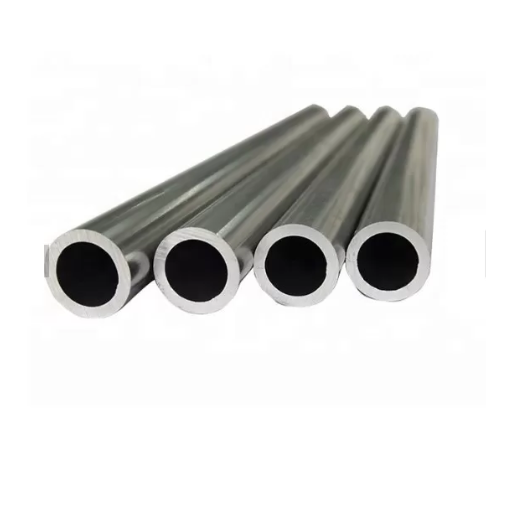
Examining the Chemical Makeup of S2520
S2520 stainless steel is an austenitic alloy known for its high resistance to high-temperature environments, which results from its careful chemical composition. The main alloying constituents are approximately 20% chromium (Cr) and 25% nickel (Ni), which combined offer unparalleled oxidation resistance and stability at high temperatures. Moreover, the alloying of a controlled amount of carbon, usually between 0.03% and 0.08%, enhances the alloy’s strength and creep resistance due to mechanical stress.
The addition of trace elements like manganese (Mn), silicon (Si), and molybdenum (Mo) improves the steel’s resistive attributes against oxidative and acidic chemical attacks. Molybdenum supplements the resistance of the alloy against pitting and crevice corrosion, especially in chloride-rich regions, which is vital for the alloy. Furthermore, the alloying with nitrogen (N) enables the alloy to have better tensile strength and toughness while allowing the material to sustain structural stability under prolonged exposure to heat.
Having a strong chemical profile, S2520 is used in applications requiring mechanical dependability and endurance to challenging conditions. These encompass parts for heat exchangers, furnaces, and general chemical processing machinery. S2520’s precise industrial strength performance is achieved through its additives of various chemical constituents.
Performance Characteristics of S2520
S2520 has excellent creep resistance and exceptional mechanical strength S2520 provides, providing it with thermal stability, which makes it a superior material for high-temperature applications. In industrial environments, S2520’s unique properties are critical as it ensures structural integrity under sustained stress at elevated temperatures. Additionally, S2520 exhibits great oxidation and carburization resistance, even in aggressive chemical agents or extreme thermal cycling.
The alloy’s resistance to corrosion is exceptional, especially in environments with high concentrations of acidic or chloride-based compounds. This form of alloy is possible due to the incorporation of chromium, nickel, and silicon into the alloy’s protective layer of oxide, which prevents further oxidation and degradation.
S2520 can retain up to 90% of its tensile strength after prolonged exposure to temperatures exceeding 1100°F (593°C), surpassing many comparable alloys. Furthermore, specialized systems such as heat exchangers or furnaces would benefit greatly from S2520’s thermal conductivity as it allows for optimized energy use. When used in industries that deal with aggressive chemicals or high temperatures, S2520 provides unmatched endurance and reliability, which makes it their preferred choice.
Common Uses of S2520 Stainless Steel Pipe
The S2520 stainless steel pipe is used in many industries due to its ability to withstand harsh conditions, high temperatures, and chemicals. Its primary application is in chemical and petrochemical industries, wherein it is used in transporting highly corrosive fluids, for instance, acids and alkalis. The alloy’s mechanical qualities, alongside resistance to oxidation at high temperatures, make it suitable for use in heat exchangers, industrial furnaces, and boilers, all of which require reliable systems for efficient heat transfer.
Furthermore, S2520 stainless steel pipe is used S2520 stainless steel pipe is also used in power generation plants, especially in superheater and reheater tubing in coal, gas, or nuclear energy plants. Thermal stress and long-term creep mean a long service life in demanding conditions. S2520 is also used in aerospace, where its lightweight materials are paired with high strength, and are especially geared towards components for exhaust systems and other high-strain items.
Additional uses include the pharmaceutical and food processing industries, where hygiene standards and corrosion resistance are both essential. S2520 piping eliminates the risk of material degradation during the safe transport of sterile solutions, harsh cleaning agents, or other temperature-sensitive substances. Its broad scope of applications for specialized environments highlights its value as a modern industrial high-performance material.
How Does S22053 Compare to S2520 in Terms of Corrosion Resistance?
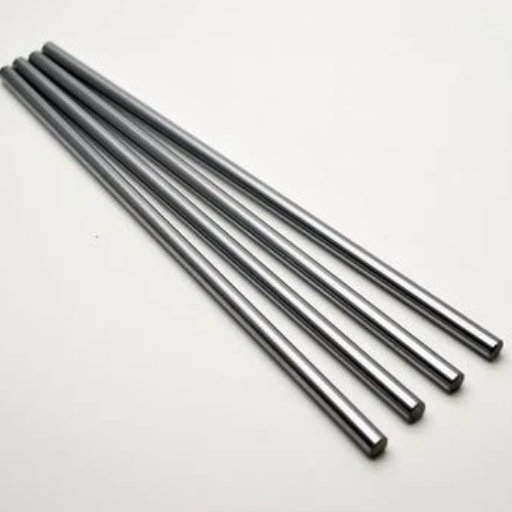
Corrosion Resistance of S22053 in Marine Environments
S22053 boasts superior corrosion resistance in seawater and marine applications compared to its alternatives due to its sophisticated duplex microstructure, which consists of both austenitic and ferritic steel. Its dual-phase structure improves resistance to pitting, crevice corrosion, and stress corrosion cracking (SCC), making it favorable for marine and coastal applications where exposure to chloride-rich environments is prevalent. The high chromium content (22-25%) and molybdenum (3-5%) also preserve its integrity in aggressive environments with high salinity and temperature fluctuations.
S22053’s predominant performance over conventional stainless steels 316L and 317L is consistent in saltwater environments. These grades tend to suffer from localized corrosion in seawater with high chloride concentrations, but S22053 retains its structural integrity without succumbing to corrosive breakdown even at elevated temperatures above 50°C (122°F). This enhanced performance can be attributed to its PREN (Pitting Resistance Equivalent Number), surpassing 35 outmatching standard austenitic grades, a number that highlights the alloy’s survivability in harsh marine environments.
Equally important, S22053 displays exceptional resistance to biofouling — the growth of microorganisms or algae on metal surfaces, which is particularly problematic in marine settings. This property aids in reducing maintenance and downtime in desalination plants, offshore oil facilities, and shipbuilding. The alloy’s enduring performance in these harsh environments minimizes the frequency of material replacement, improving cost efficiency and operational reliability over time.
Evaluating the Anti-Corrosive Properties of S2520
The combination of S2520’s mechanical properties and its anti-corrosive characteristics is due to its metallurgical structure and chemical makeup. It contains high chromium, molybdenum, and nickel, which prevents rapid corrosion by pitting, crevice, or stress corrosion cracking in harsh conditions from chlorides.
S2520 has been researched and confirmed to withstand seawater without significant erosion, showing minimal physical changes even after long durations. Alongside the mechanical properties, countless marine and industrial frameworks rely on the low electric pitting resistance– equivalent number (PREN)– provided, further proving it is one of the leading alloys for defense at sea. Unlike other stainless steels, S2520 does not experience corrosion breakdown, leading to an increased lifespan by an astounding 40% under the same conditions.
The strength S2520 has against heavy corrosive agents means it can be used in extreme engineering marvels like power plants or hydraulic constructions. Not only do mechanically advanced ballistic systems lead to reduced costs of fuel while improving energy efficiency, but these robust systems also mean fulfilling the pathways set out by the world’s leading engineering testers for ranked systems like the ASTM and ISO.
Which Alloy Offers Better Durability: S22053 or S2520?
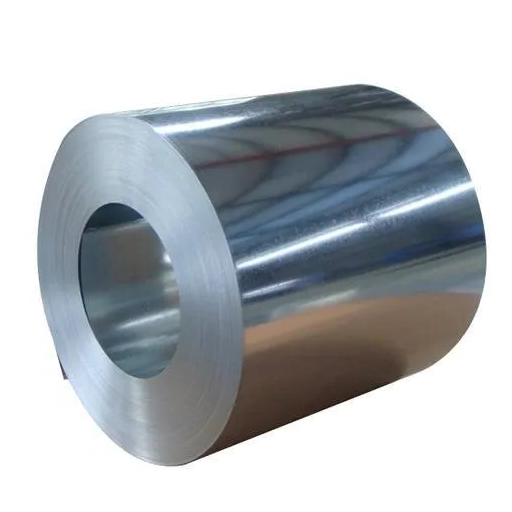
Durability Assessment of S22053 Stainless Steel Pipe
The pipe S22053 is manufactured from stainless steel, and it’s one of the most durable pipes. This is due to its duplex microstructure, a unique mixture of austenitic and ferritic phases. This type of composition increases mechanical strength and resistance to high-stress environments. What stands out the most about S22053 is the fact that it is very resistant to pitting and crevice corrosion, even in chloride environments, which is difficult for generic stainless steel grades. Because of the high concentration of Molybdenum and Nitrogen, it provides excellent protection against localized corrosion mechanisms and ensures maximum durability in harsh industrial and marine environments.
While assessing a range of durability, S22053’s ability to resist extreme pressure and temperature is also critical. Among various alloys, S22053 competes with the best in demonstrating thermal stability. This allows the maintenance of structure during thermal load fluctuations. Reducing stress accumulation during operational cycles caused by low expansion thermal, also mitigating material failure risk during extreme cycles.
S22053 has the longest lifespan among many conventional alloys of stainless steel and withstands harsh mechanical and corrosive conditions without losing reliability. This is why it has become so popular in the oil, gas, chemical processing, and even desalination plants, which require advanced stainless steel alloys.
How Durable is S2520 in Industrial Applications?
S2520, an austenitic stainless steel, is known for its exceptional durability as a result of its high nickel and chromium content along with molybdenum, which further increases its resistance to pitting and crevice corrosion. The alloy is also able to withstand mechanical loads across a wide range of temperatures from cryogenic environments to high-temperature conditions, which further adds to its durability.
S2520 performs better than other alloys in oxidizing and reducing conditions, particularly in the petrochemical processing, heat exchangers, and power generation equipment industrial sectors. In Stress Rupture testing, S2520 withstands mechanical stress at high temperatures for long durations without notable deformation or creep. Furthermore, its resistance to thermal fatigue prolongs life in cyclic thermal exposure situations, such as furnace components.
S2520 outperforms conventional stainless steels like 316L in stainless steel comparisons by maintaining structural integrity over longer periods of time, minimizing required maintenance, and reducing cost. This set of features allows for the unparalleled capability in high-strain operational zones, making S2520 the ideal stainless steel for applications requiring aggressive reliability.
What Are the Cost Considerations for Choosing Between S22053 and S2520?
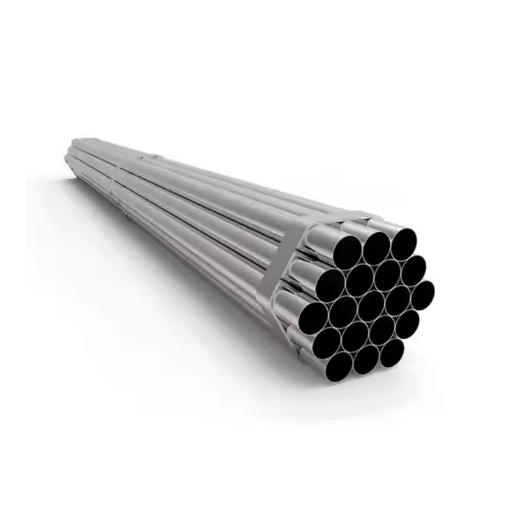
Factors Affecting the Cost of S22053 Stainless Steel
As is the case with other models of stainless steel, the cost of S22053 stainless steel is affected by many technical and economic factors that are worth studying beforehand. Here are five factors that directly impact the cost of production of S22053:
- Raw Material Registration Of Market Prices: The amount of experienced alloying elements like molybdenum, nickel, and chromium helps in improving the corrosion resistance of S22053 and its mechanical properties. The market rates of value for these raw materials are from the S22053 price markets. For example, the price volatility of nickel can greatly affect the cost variations of the end product.
- The Complexity Of Manufacturing Process: Advanced metallurgical steps like the complete duplex microstructure require precision melting, heat treat protocols, and controlled solidification. All these require much energy and change with the type of equipment used, leading to higher costs of manufacturing.
- General Demand Of The Product And Supply Section: Regions and industries like oil, gas, and chemical processing, aerospace, make full use of S22053, which influences its price due to market competition. This also applies to the space created when prices are set due to few resources being available.
- Fabrication and Machining Challenges: Compared to traditional stainless steels, S22053 is more challenging to machine and fabricate because it possesses a higher strength and hardness. Increased operational expense is a result of needing more specialized tools, skilled labor, and unique machining techniques.
- Compliance with Industry Standards: S22053 stainless Steel undergoes extensive testing and certifies to international standards such as ASTM, ASME, or ISO. Although these certifications guarantee dependability and quality, they also increase costs because of added inspections and testing phases.
Each of these considerations detrimentally impacts the S22053 cost structure, emphasizing the need for deep cost evaluation during the selection of materials to be used.
Cost Analysis for S2520 Steel Pipes
S2520 steel pipes are exceptional in their performance and are commonly used in applications that require remarkable resistance to heat, abrasion, and corrosion. The cost factors associated with S2520 steel pipes are determined by the composition of useful materials, the processes of steel creation, and adherence to the given standards.
- Useful Material Composition: S2520 steel is an alloyed stainless steel of austenitic structure. It includes large amounts of chromium and nickel, which increase the strength and make the steel more resistant to oxidation at high temperatures. These alloying elements are quite expensive, and variations in prices of global goods result in a direct consequence on the price of S2520 pipes. Also, the inclusion of molybdenum in the steel enhances resistance to pitting corrosion, but it is too expensive due to its scarcity.
- Costs Related to Manufacturing and Processing: In the production of S2520 steel pipes, advanced techniques such as precision casting, welding, and heat treatment, greater than or equal to the specified values of dimensional and mechanical properties, are often utilized. The meticulous nature of processes such as annealing, quenching, or tempering is exceedingly time-consuming, increasing active energy, labor costs, and total energy expenditure. In addition, the expenditures associated with manufacturing are compounded by the very precise specialized equipment, as well as the sophisticated, college-level skills workforce that is needed.
- Compliance with Standards and Certification Requirements: Stainless steel S2520 pipes serve as an excellent construction material, but they also require compliance with international standards such as ASME SA213 or ASTM A213 for heat exchangers and boiler components. Meeting these exacting standards encompasses a diverse scope of verification encompassing testing for tensile strength, hardness, and potential chemical impurity. These procedures alone do not fail to meet the procurement condition results, but they do layer costs dramatically due to the considerable amount spent on test facilities and third-party certification.
- Market Demand and Supply Chain Logistics: The need for S2520 steel pipes is highly associated with the aerospace, petrochemical, and power generation industries, as they require components able to endure extreme service conditions. Any spikes in demand in these industries alongside supply chain shocks or longer lead times tend to add to the already existing volatility in pricing. Moreover, logistics costs, encompassing transport and import taxes, can create huge regional price differences based on the production zones relative to the end-user markets.
When evaluating costs, a decision-maker needs to take into account the prevailing market economic conditions, such as material pricing or the long-term, easier maintainable life costs due to S2520 steel pipes enduring robust construction and low upkeep. Such understanding enables informed decision-making in the planning and execution of the projects.
References
- S22053 Pipe Seamless Duplex 2205 UNS S32205 – Discusses duplex stainless steels, including S22053.
- Comparing Duplex Stainless Steels: Grades, Properties – Offers a comparison of various duplex stainless steel grades.
- Duplex 2205 vs. Super Duplex 2507 – Explores differences between duplex and super duplex grades.
Frequently Asked Questions (FAQ)
Q: What are the main differences between S22053 and S2520 stainless steel pipes?
A: The main differences between S22053 and S2520 stainless steel pipes lie in their composition and mechanical properties. S22053, often associated with duplex 2205, offers higher strength and better corrosion resistance compared to S2520, which is more comparable to austenitic grades like 304 stainless steel. Both types are commonly used for stainless steel seamless applications.
Q: How do S22053 and S2520 perform in high-temperature environments?
A: S22053, due to its duplex structure, provides superior performance in high-temperature environments compared to S2520. S2520, similar to 304, may not perform as well under extreme temperatures. For applications involving high temperatures, considering alternatives like 310s may be beneficial.
Q: Are S22053 and S2520 suitable for use in marine environments?
A: Yes, both S22053 and S2520 are suitable for marine environments due to their corrosion resistance. However, S22053, with its enhanced duplex properties, offers improved resistance to chloride-induced stress corrosion cracking, making it more suitable for harsh marine applications than S2520.
Q: Can S22053 and S2520 be used interchangeably for shipbuilding?
A: While both can be used in shipbuilding, they are not completely interchangeable. S22053 is preferred for critical applications requiring higher strength and corrosion resistance, whereas S2520 may be used for non-critical components.
Q: What are the common applications for S22053 and S2520 stainless steel tubes?
A: S22053 is commonly used in industries requiring high strength and corrosion resistance, such as chemical processing, oil and gas, and marine industries. S2520, being comparable to 304 stainless steel, is widely used in general industrial applications, kitchen equipment, and architectural structures.
Q: Do S22053 and S2520 stainless steel tubes meet ASTM standards?
A: Yes, both S22053 and S2520 stainless steel tubes can meet ASTM standards, provided they are manufactured and tested according to the specified quality control procedures. It is important to confirm with the supplier that the specific product meets the relevant ASTM standard.
Q: How do the costs of S22053 and S2520 compare?
A: Generally, S22053 is more expensive than S2520 due to its superior properties and complex manufacturing process. The cost can also be influenced by factors like supplier pricing, market demand, and availability of raw materials.
Q: Are there specific suppliers for S22053 and S2520 stainless steel tubes?
A: Yes, there are specific suppliers for S22053 and S2520 stainless steel tubes. It is advisable to select suppliers who have a proven track record and adhere to strict quality control standards to ensure the quality of the stainless steel tubes.
Q: What are the considerations for welding S22053 and S2520 stainless steel?
A: Welding S22053 requires careful control of heat input and the use of compatible filler materials to maintain its duplex properties. S2520, similar to 304, is generally easier to weld but still requires attention to avoid welding defects. Consulting with welding specialists and adhering to best practices is recommended for both types.
Q: How do hot rolled and cold rolled processes affect S22053 and S2520?
A: Hot rolled processing involves heating the steel above its recrystallization temperature, which can improve ductility and workability. Cold rolled processing, performed at room temperature, enhances surface finish and dimensional accuracy. Both processes can be applied to S22053 and S2520, affecting their final properties and applications.

